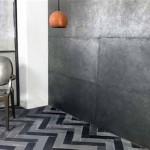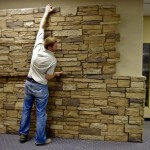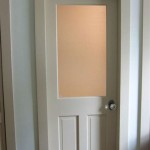Traditional Interior Design: A Timeless Aesthetic
Traditional interior design, a style that evokes a sense of history, comfort, and sophistication, remains a popular choice for homeowners seeking enduring elegance. Rooted in European aesthetics of the 18th and 19th centuries, the traditional style embraces formality, rich details, and a curated selection of furnishings and accessories. It's characterized by its timeless appeal, avoiding fleeting trends in favor of established design principles and a commitment to quality and craftsmanship.
This style isn't merely a replica of historical periods, but rather an adaptation and interpretation, blending elements from various eras to create a cohesive and harmonious environment. Comfort and functionality are prioritized, ensuring that the space is not only visually appealing but also conducive to relaxation and social interaction. The traditional style often incorporates a sense of grandeur, achieved through the use of substantial furniture pieces, elaborate architectural details, and a carefully chosen color palette.
Key Characteristics of the Traditional Style
Several defining elements distinguish the traditional interior design style. These characteristics contribute to its overall sense of refinement and timelessness. Understanding these key aspects is crucial for successfully implementing the traditional aesthetic in a home or space.
Formality and Symmetry: A hallmark of traditional design is its emphasis on formality and symmetry. Rooms are typically arranged with a balanced layout, often featuring a focal point such as a fireplace or a prominent piece of furniture. Pairs of chairs, lamps, and decorative objects are frequently used to create a sense of visual harmony and order. The arrangement of furniture and accessories follows a structured pattern, reinforcing the overall sense of formality. This doesn't necessarily mean rigidity, but rather a deliberate and balanced composition that conveys a sense of stability and elegance.
Rich Color Palettes and Luxurious Fabrics: The color palettes employed in traditional design tend to be warm, inviting, and often muted. Common colors include creams, beiges, golds, browns, and deep reds. These are frequently complemented by accent colors such as greens, blues, and burgundies. The use of color is often layered, with different shades and tones used to create depth and visual interest. Luxurious fabrics play a significant role in the traditional aesthetic. Silk, velvet, linen, and brocade are common choices, adding texture and opulence to the space. Patterns such as damask, floral prints, and stripes are also frequently incorporated, further enhancing the visual richness.
Intricate Details and Architectural Elements: Traditional interiors are characterized by a wealth of intricate details and architectural elements. Crown molding, wainscoting, and chair rails are common features, adding depth and dimension to the walls. Fireplaces are often central elements, featuring ornate mantels and decorative surrounds. Hardwood flooring is a staple, often enhanced with area rugs in Persian or Oriental styles. Lighting fixtures are typically elaborate, featuring crystal chandeliers, sconces, and table lamps with fabric shades. These architectural and decorative details contribute to the overall sense of sophistication and refinement that defines the traditional style.
Furniture Selection and Placement
Furniture is a cornerstone of traditional interior design, representing a significant investment in enduring quality and craftsmanship. The selection and placement of furniture pieces are carefully considered to create a comfortable, functional, and visually appealing space.
Traditional furniture is often substantial and well-made, constructed from hardwoods such as mahogany, cherry, and walnut. Upholstery is typically detailed, featuring tufting, button accents, and decorative trim. Styles are often inspired by classic designs, such as Queen Anne, Chippendale, and Victorian furniture. Pieces like wingback chairs, Chesterfield sofas, and ornate dining tables are frequently incorporated. The arrangement of furniture focuses on creating conversation areas and facilitating social interaction. Chairs and sofas are often arranged around a coffee table or fireplace, encouraging a sense of intimacy and connection. The placement of furniture is also carefully considered to ensure a balanced and harmonious flow throughout the room.
Antique or antique-inspired pieces are often incorporated to add character and authenticity to the space. These items can range from small decorative accessories to larger furniture pieces, adding a sense of history and depth to the overall design. When selecting furniture, attention to detail and quality is paramount. Investing in well-made pieces that will stand the test of time is a hallmark of the traditional aesthetic.
Accessories and Decorative Elements
Accessories and decorative elements play a crucial role in completing the traditional interior design style, adding personality, visual interest, and a sense of curated elegance. These elements are carefully selected to complement the overall aesthetic and enhance the feeling of warmth and sophistication.
Artwork is often a prominent feature, with framed paintings, prints, and photographs adorning the walls. Landscapes, portraits, and still lifes are common choices, reflecting the traditional preference for classic and timeless subject matter. Mirrors, particularly those with ornate frames, are also frequently used to enhance the sense of light and space. Decorative objects such as porcelain figurines, crystal vases, and antique clocks add visual interest to shelves, tables, and mantels. Textiles, such as throw pillows, blankets, and curtains, play a vital role in adding texture and warmth to the space. These are often made from luxurious fabrics such as silk, velvet, and brocade, and may feature intricate patterns and embellishments.
Lighting is another critical aspect of traditional décor. Chandeliers, sconces, and table lamps are used to create a warm and inviting ambiance. Lamp shades are typically made from fabric, such as silk or linen, and may be adorned with decorative trim. Greenery, such as potted plants and floral arrangements, can also be incorporated to add a touch of natural beauty to the space. These accessories are carefully chosen and arranged to create a cohesive and harmonious environment that reflects the homeowner's personal style and taste.
Blending Traditional with Modern Elements
While the traditional style is rooted in historical aesthetics, it can be successfully blended with modern elements to create a more contemporary and personalized space. This approach allows homeowners to enjoy the timeless elegance of traditional design while incorporating modern comforts and conveniences.
One way to blend traditional and modern elements is to use a neutral color palette as a foundation, incorporating pops of color through accessories and artwork. This creates a sense of visual lightness and allows the traditional furniture and architectural details to stand out without feeling overwhelming. Another approach is to incorporate modern lighting fixtures, such as recessed lighting or track lighting, to complement the traditional chandeliers and sconces. This can add a touch of contemporary flair while still maintaining the overall sense of elegance.
Modern art can also be incorporated alongside traditional paintings and prints, creating an eclectic and visually interesting gallery wall. When blending traditional and modern elements, it's important to maintain a sense of balance and harmony. Avoid overwhelming the space with too many conflicting styles, and focus on creating a cohesive and well-integrated design. The key is to incorporate modern elements in a way that enhances the traditional aesthetic rather than detracting from it. For example, a streamlined coffee table with clean lines can complement a traditional sofa upholstered in a rich velvet fabric. The juxtaposition of these elements creates a sense of visual interest and prevents the space from feeling too stuffy or antiquated.
Color Considerations in Traditional Spaces
The careful selection and application of color are essential in achieving the desired atmosphere in a traditional interior. While a wide array of colors can be incorporated, certain palettes and techniques tend to be more prevalent and effective in creating a timeless and sophisticated aesthetic.
Classic traditional color schemes often revolve around warm, muted tones. Cream, beige, ivory, and taupe form a versatile neutral base that allows for the introduction of richer accent colors. These neutral shades create a sense of serenity and spaciousness, while also providing a backdrop that allows architectural details and furnishings to take center stage. Accent colors often draw inspiration from nature, including greens, blues, and browns. These hues can be incorporated through upholstery, artwork, and decorative accessories. Deeper, richer tones like gold, burgundy, and forest green can be used to add a touch of luxury and formality. These colors are often employed in smaller doses, such as in throw pillows, curtains, or wall coverings. One effective technique is to use analogous color schemes, which involve selecting colors that are adjacent to each other on the color wheel. This creates a harmonious and visually pleasing effect. For example, a room might feature a palette of blues, greens, and purples, creating a sense of tranquility and sophistication.

Traditional Interior Design Defined And How To Master It Décor Aid

Traditional Interior Design Defined And How To Master It Décor Aid

Classical Interior Design Interiors Luxdeco

Interior Design Styles 101 The Ultimate Guide To Decorating In 2025 Decorilla

20 Classic Interior Design Styles Defined Décor Aid

6 Key Differences Between Traditional Homes And Modern Foyr
:max_bytes(150000):strip_icc()/DesignbyEmilyHendersonDesign_PhotobySaraLigorria-Tramp_LAHouse_BasementOffice_1-5df79e6024e34a988f7033f3eade9339.jpeg?strip=all)
What Is Traditional Interior Design Style

How To Balance Modern And Traditional Design In Your Home

Traditional Hot Style Decor

What S Your Style Traditional Karry Home Solutions
Related Posts








